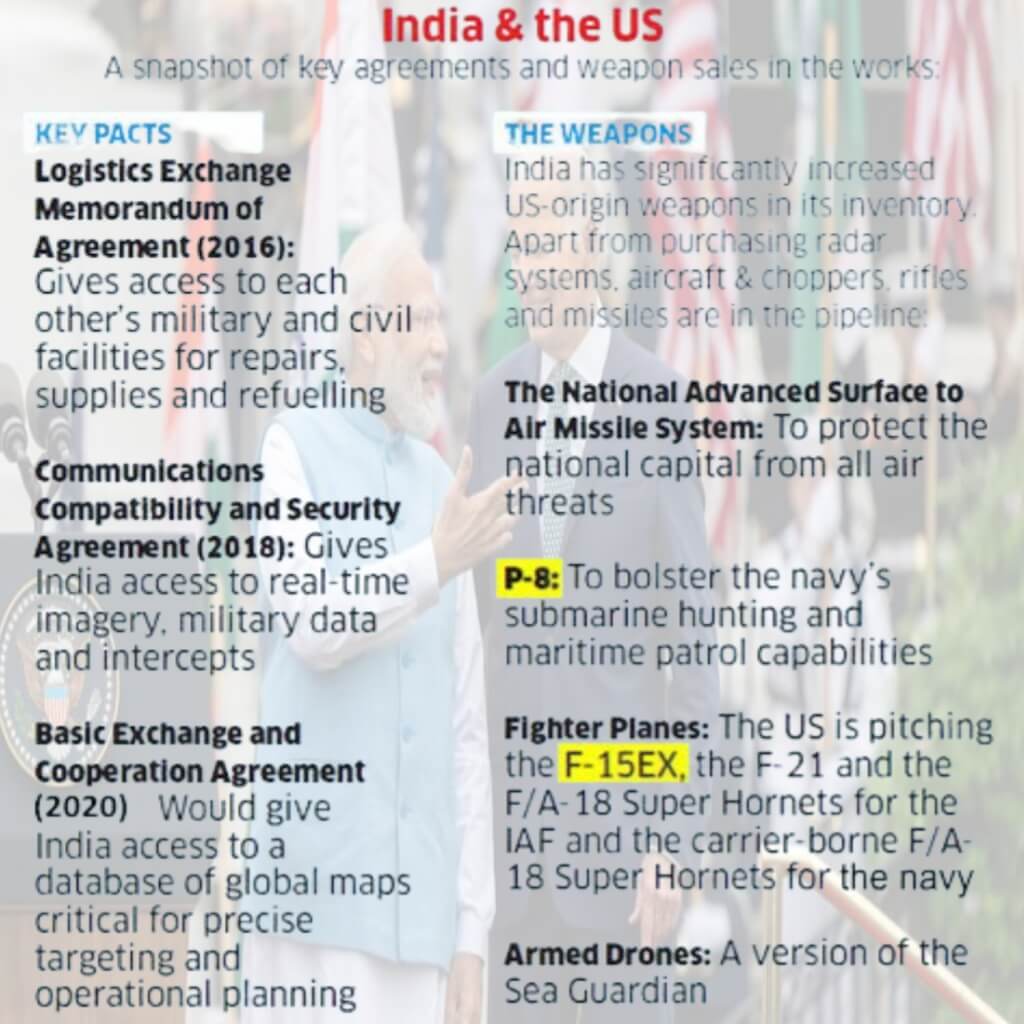India-US Defense Technology Agreement
India and the US have signed a Project Agreement (PA) to jointly develop the ‘Air-Launched Unmanned Aerial Vehicle’ (ALUAV).

key points of India-US Defense Technology Agreement
■ Following this agreement between the Ministry of Defense (MoD) of India and the US Department of Defense (DoD), work for the development of ALUAV will be initiated under the ‘Defense Technology and Trade Initiative’ (DTTI).
■ This agreement outlines the collaboration between Air Force Research Laboratory, Indian Air Force, Defense Research and Development Organization (DRDO) towards the design, development, demonstration, test and evaluation of the system to co-develop the ALUAV prototype.
■ This project agreement for Air-Launched Unmanned Aerial Vehicle (ALUAV) is a Memorandum of Understanding (MoU) signed between the Ministry of Defense (MoD) of India and the US Department of Defense (DoD) for ‘Research, Development, Test and Evaluation’ (RDT&E). ) is part of.
■ This MoU was first signed in January 2006 and was renewed in January 2015.
Project Agreement (PA) on ALUAV
■ Objective: Under this initiative both the countries will work towards system design, development, demonstration, test and evaluation for co-development of ALUAV prototype.
■ Implementation: The Aeronautical Development Establishment (ADE) established in DRDO along with the Indian and US Air Forces and the Aerospace Systems Directorate established in the ‘Air Force Research Laboratory’ (AFRL) will play a major role in the execution of this project agreement.
■ Significance: This agreement is an important step towards strengthening defense technology cooperation between the two countries through co-development of defense equipment.
■ ALUAV can also be launched from an aircraft to target enemy systems. This partnership may promote the joint creation of Artificial Intelligence (AI) supported drone swarm in the future.
Defense Trade and Technology Initiative (DTTI) India-US Defense Technology Agreement

• Formation: ‘Defence Trade and Technology Initiative’ (DTTI) was announced in 2012 as an ambitious initiative for co-production and co-development of military systems, however despite several attempts the initiative has not seen any actual Progress has not been made.
■ Objective: To strengthen the defense industrial base of the US and India by moving from the traditional ‘buyer-seller’ approach to a collaborative approach.
■ Projects: Projects under DTTI have been identified as near, medium and long term.
■ Near-term projects include ‘Air-Launched Small Unmanned Systems’, ‘Lightweight Small Arms Technology’ and ‘Intelligence-Surveillance-Targeting and Reconnaissance’ (ISTAR) systems.
■ Medium term projects include ‘Maritime Domain Awareness Solution’ and ‘Virtual Augmented Mixed Reality for Aircraft Maintenance’ (VAMRAM).
■ Long-term projects include anti-drone technology called ‘Terrain Shaping Obstacle (Lethal Ammunition)’ and ‘Counter-UAS, Rocket, Artillery and Mortar’ (CURAM) system for the Indian Army.
■ Joint Working Groups: Under DTTI, Joint Working Groups on land, naval, air and aircraft carrier technologies have been established to focus on mutually agreed projects in the respective domains.Other major agreements between India and America
■ Basic Exchange and Cooperation Agreement (BECA) deals with sharing of information on maps and satellite images for large-scale geospatial intelligence and defence. It was signed between India and America in the year 2020.
■ Communications Compatibility and Security Agreement (COMCASA) was signed in the year 2018. Its objective is to facilitate communication between Weapons Platforms of two armed forces.
■ Logistics Exchange Memorandum of Agreement (LEMOA) was signed in the year 2016. Its objective is to provide mutual logistics support to each other’s armies around the world.
■ ‘General Security of Military Information Agreement’ (GSOMIA) was signed by the government in the year 2002.• Its purpose is to protect military information shared by the USA.
Read More:-Model Code of Conduct